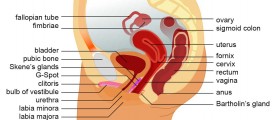Painful Bladder Syndrome (PBS), also known as Interstitial Cystitis, is a condition that causes persistent pain that often goes undetected or incorrectly diagnosed as a mental health issue. Because of advances in medical knowledge, we now recognize that PBS is a genuine physical health problem that can have a significant impact on those who suffer from it. The signs and symptoms of PBS, how it is identified & diagnosed, and what treatment options are available, as well as clear up some common misconceptions about the condition.
What is Painful Bladder Syndrome?
Painful Bladder Syndrome (PBS) is a medical disorder that causes chronic bladder pain, common bathroom trips, and pelvic discomfort. Such signs can make daily life difficult and have a negative impact on someone's mental health, leaving them feeling isolated and misunderstood. Knowing the importance of diagnosing and treating PBS early on can significantly improve the standard of life for those affected.
Symptoms of PBS
- Chronic Bladder Pain: This pain usually gets worse when the bladder is full.
- Frequent Urination: Many people with PBS find themselves needing to urinate more than eight times a day.
- Pelvic Discomfort: This discomfort can occur during or after going to the bathroom.
These symptoms can mimic those of other illnesses, such as urinary tract infections, making an accurate diagnosis difficult.
Diagnosing Painful Bladder Syndrome
In previous generations, diagnosing PBS was mainly based on subjective descriptions of symptoms, making it difficult for healthcare personnel to precisely diagnose the illness. Fortunately, new diagnostic techniques have significantly enhanced the process.
Uroflowmetry Explained
Uroflowmetry is a main diagnostic technique for PBS. It is a simple procedure in which patients urinate into a device that measures
- Urine Flow Rate: Men typically have a flow rate of 10-15 mL/sec, whilst women range from 15-25 mL/sec.
- Flow Patterns: Any mistakes in these patterns may suggest a problem with bladder function.
This test provides objective data that helps healthcare providers make informed diagnoses.
Urodynamic Testing
Urodynamic testing can provide a more complete picture of bladder health. This entails monitoring numerous bladder functions, including as how well it holds and empties pee, as well as pressure and muscle activity inside the bladder.
Debunking Myths: PBS is Physical, not Just Psychological
The most widespread myth about PBS is that it's "all in your head." While stress might aggravate symptoms, advances in diagnostics have revealed:
- Physical abnormalities: Changes in how the bladder works. - Measurable Differences: Variations in urine flow patterns caused by PBS.
This research emphasizes the conclusion that PBS is a real medical problem that necessitates physical, not just psychological, treatment.
Treatment Approaches
Managing PBS usually involves a customized approach to care. Today's diagnostic tools allow for specific therapy based on individual needs. Key Steps for Treatment Planning
1. Accurate Diagnosis: Modern tools such as uroflowmetry can help identify specific deviations.
2. Lifestyle Changes: Making dietary changes, such as eliminating bladder irritants like caffeine and spicy foods, can greatly improve symptoms.
3. drugs: Depending on the severity of your symptoms, your doctor may prescribe pain relievers, anti-inflammatory drugs, or bladder relaxants.
4. Physical Therapy: Targeted exercises can help with pelvic discomfort.
5. Surgical Options: In severe situations, surgical procedures may be explored.
Conclusion: Helping those affected by PBS.
Painful Bladder Syndrome is more than simply a psychological issue; it is a physical ailment that demands proper diagnosis and treatment. Healthcare providers can provide effective remedies to patients suffering with PBS by using advanced diagnostic tools such as uroflowmetry.
By advising early detection and tailored treatment approaches, we can help patients recover their quality of life. It is critical to overcome redundant prejudices and accept medical advances that make managing PBS more successful than ever.
Loading...
















